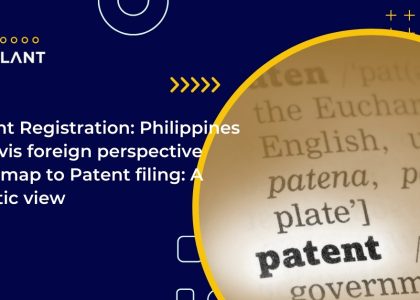

How To Patent A Product? – 6 Patent Tips
If you’re an inventor or innovator, you should be proud to introduce novel goods and concepts to the general public. You should also be acknowledged for your idea, and a patent may help with that. You may give yourself (or your small business) control over how your innovation is utilized and ensure that you will receive a part of any earnings resulting from it by securing patent protection.
A Patent: What Is It?
A patent is an official statement of ownership rights for a specific innovation. Intellectual property and tangible creations are both protected by patents. A person who “invents or discovers any new and useful technique, the machine, manufacturing, or composition of matter, or any new and useful improvement thereof, may acquire a patent,” according to the United States Patent and Trademark Office (USPTO). The typical U.S. patent has a 20-year lifespan starting when a patent application is submitted.
The USPTO does not authorize inventors to produce a product. Instead, it gives the creators the sole authority to decide whether or not other people can produce their inventions. The right to exclude others from manufacturing, using, offering for sale, selling, or importing the invention is given, according to the USPTO, not the right to do any of those things.
How to Patent an Idea or Product?
The patent application procedure is meant to be simple enough for the typical inventor to complete yet difficult enough to distinguish between genuine inventions and inferior concepts that fall short of the law. When you submit a patent application, the U.S. Patent and Trademark Office’s patent examiners will study your invention and assess its patentability by contrasting it with previously released goods and concepts. You’ll need to wait between 18 and 24 months on average for the outcome of your patent application because the procedure is lengthy. As you move closer to the filing date for your patent, keep the following important tips in mind:
- Confirm if your idea qualifies for patent protection. If someone else has previously invented your invention, you won’t want to go through the entire patenting procedure. On its website, the USPTO provides facilities for patent searches. Even though many legal firms specialize in patent law that might assist you, a straightforward search might provide the necessary results.
- Monitor records. Keep records of your invention’s existence as soon as possible. You’ll need to demonstrate the timeline of your invention to demonstrate that you weren’t duplicating anybody else’s work because it’s likely that another inventor will be working on a comparable product simultaneously. You may document your innovation process using a dated diary, voice notes, drawings, pictures, and videos. Particularly, digital files with timestamps might support your claim of your innovation.
- Create a prototype. The government will require a comprehensive description of the innovation you want to patent. Making a working prototype is the only way to do this, with a detailed written explanation of how it functions.
- Plan on spending money. Patents are expensive. The cost of the procedure typically starts at $5,000 and rises to close to $20,000 for more complex technologies. This is a result of the price of necessary assistance and government costs. The lengthy patent application procedure sometimes leads innovators to hire registered patent attorneys or agents to help them through the USPTO. While full-service companies often employ at least one patent lawyer on staff or contract, certain legal firms specialize in patent law.
- A provisional patent application may be submitted. The patent application procedure may appear overwhelming and unaffordable to a small company like a startup or a solo practitioner. A provisional patent application can be submitted to protect your idea. A provisional patent, valid for one year, safeguards your rights. At the same time, you gather the paperwork and funds necessary to submit a non-provisional patent application (an application for your actual patent). “Patent pending” refers to inventions covered by a provisional patent. This means that even when a product hasn’t yet received complete patent protection, the rights of its creator are nevertheless safeguarded by the law against patent infringement.
- Be aware that an international patent can also be required. The U.S. Patent Office safeguards your rights as an inventor in the U.S… As a condition of trade agreements, many nations uphold each other’s patents, but you could discover that you need an international patent to protect yourself properly. The USPTO website contains information for first-time innovators who require assistance interpreting foreign patent law. You can also receive legal counsel on utility and design patent applications in other nations from a specialized patent firm.
Patent Safety
By submitting a patent application to the U.S. Patent and Trademark Office, an inventor in the United States may attempt to get a patent for an invention. Any American innovator may submit a patent application to the USPTO to request a patent. A precise explanation of the invention’s functionality, the origin of the idea, thorough drawings, and at least one potential application concept must all be included in the application. Upon completion, a patent examiner evaluates the application.
The examiner is often a member of the USPTO staff with extensive expertise in the field of invention. Before a final decision is reached after this investigation, while your application is still pending, you can request changes or waive any clauses that you believe would prevent you from receiving the approval you ultimately desire. In a nutshell, the procedure is drawn out and difficult.
In a formal sense, you may think of a patent as a legal right with government protection that gives you the exclusive right to use a certain concept, product, procedure, or another kind of innovation for a predetermined amount of time. A patent often grants you a monopoly for 14 to 20 years.
A single ivention patent is granted for each “new” invention by the USPTO, an agency of the federal government, which has a cap on the number of patents it may grant. Since no one else can produce your precise product, having a patent may be quite profitable. If an idea was previously granted a patent, no one else might use it without its current holder’s consent.








